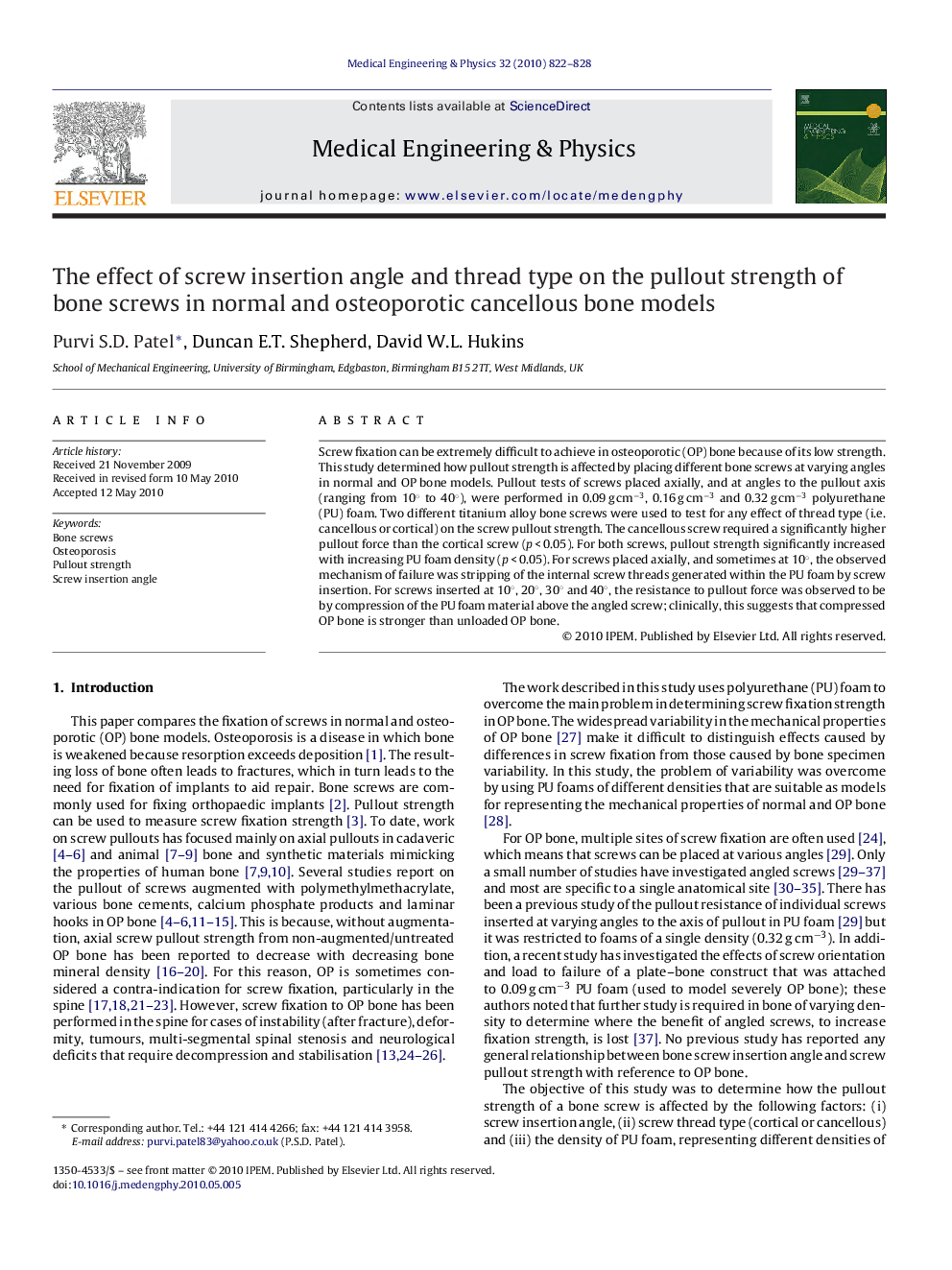| Article ID | Journal | Published Year | Pages | File Type |
|---|---|---|---|---|
| 876511 | Medical Engineering & Physics | 2010 | 7 Pages |
Screw fixation can be extremely difficult to achieve in osteoporotic (OP) bone because of its low strength. This study determined how pullout strength is affected by placing different bone screws at varying angles in normal and OP bone models. Pullout tests of screws placed axially, and at angles to the pullout axis (ranging from 10° to 40°), were performed in 0.09 g cm−3, 0.16 g cm−3 and 0.32 g cm−3 polyurethane (PU) foam. Two different titanium alloy bone screws were used to test for any effect of thread type (i.e. cancellous or cortical) on the screw pullout strength. The cancellous screw required a significantly higher pullout force than the cortical screw (p < 0.05). For both screws, pullout strength significantly increased with increasing PU foam density (p < 0.05). For screws placed axially, and sometimes at 10°, the observed mechanism of failure was stripping of the internal screw threads generated within the PU foam by screw insertion. For screws inserted at 10°, 20°, 30° and 40°, the resistance to pullout force was observed to be by compression of the PU foam material above the angled screw; clinically, this suggests that compressed OP bone is stronger than unloaded OP bone.
